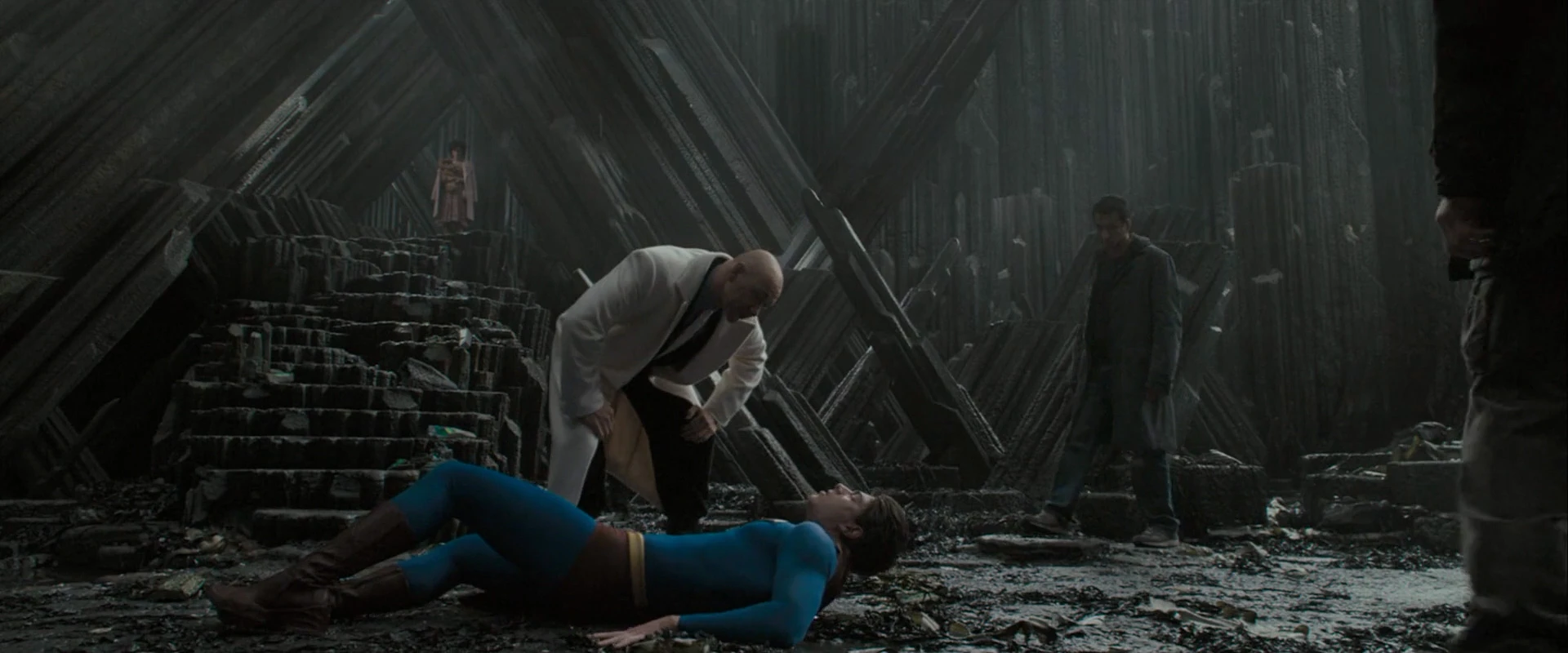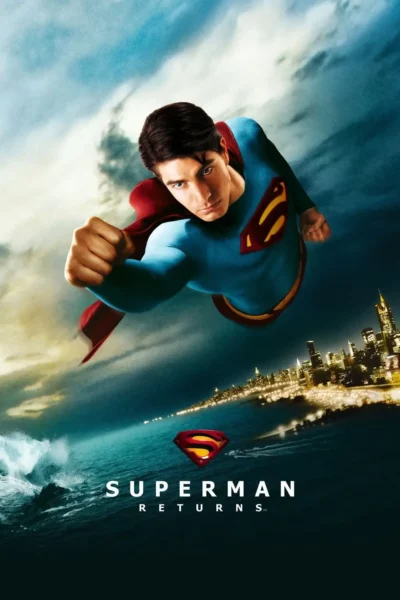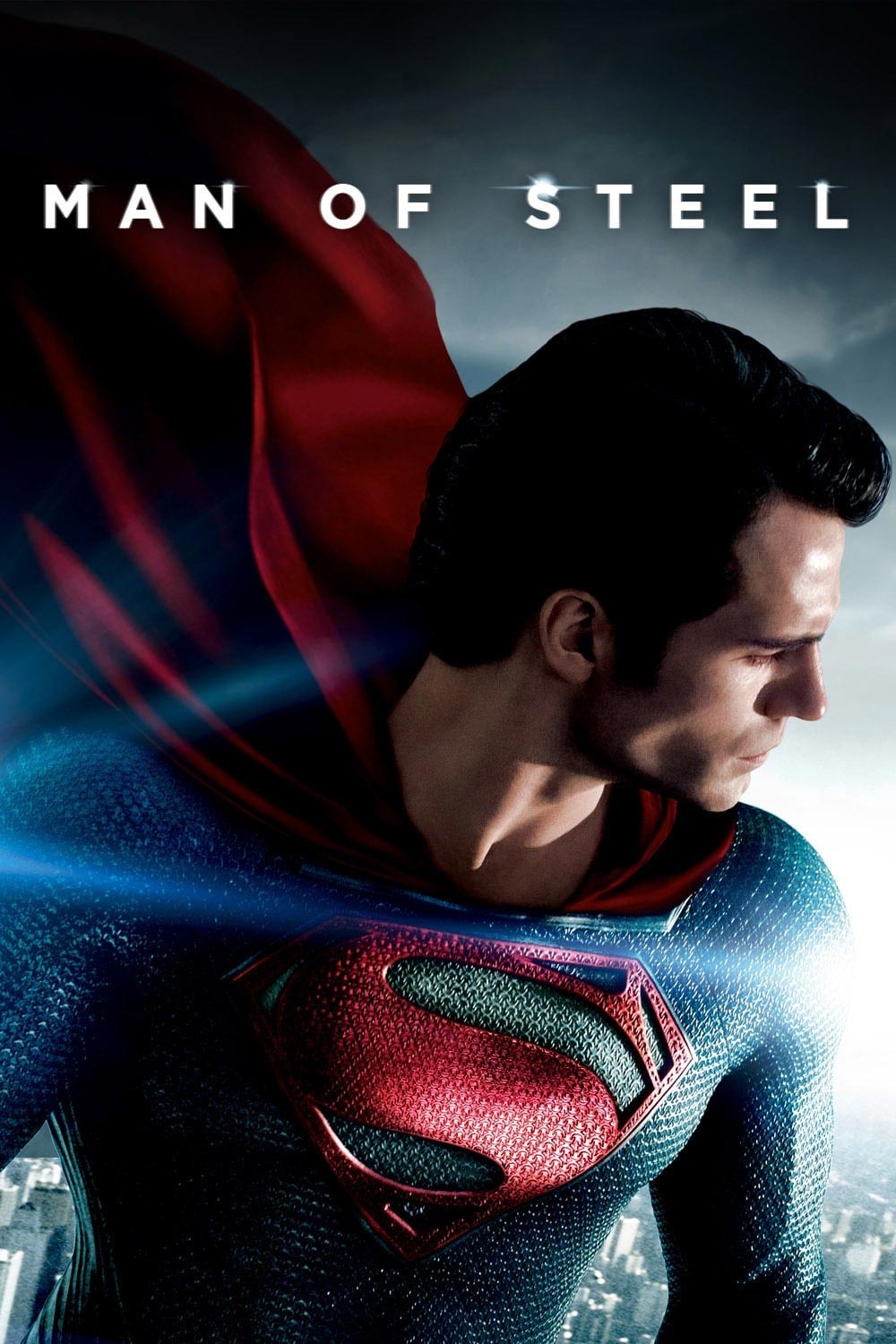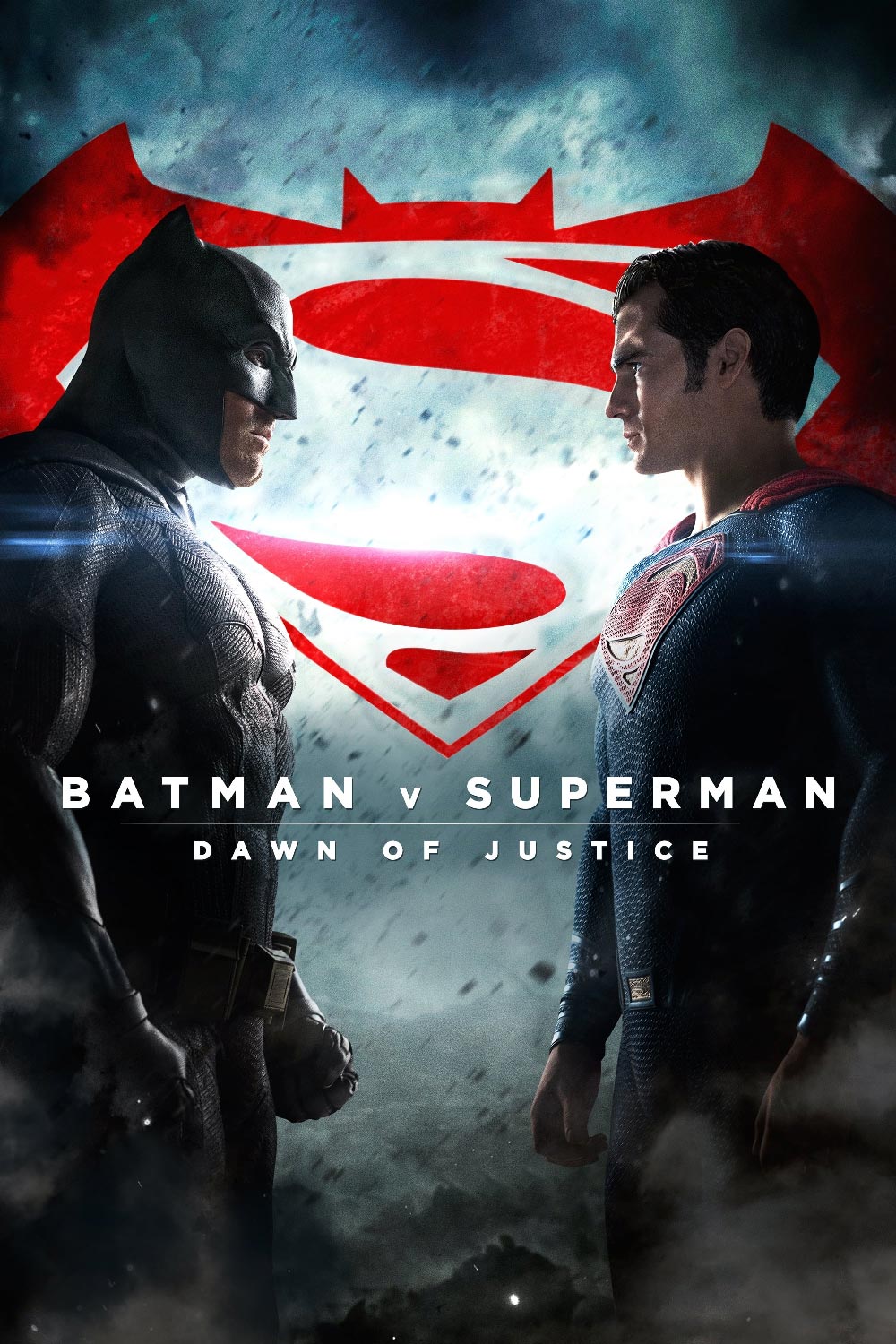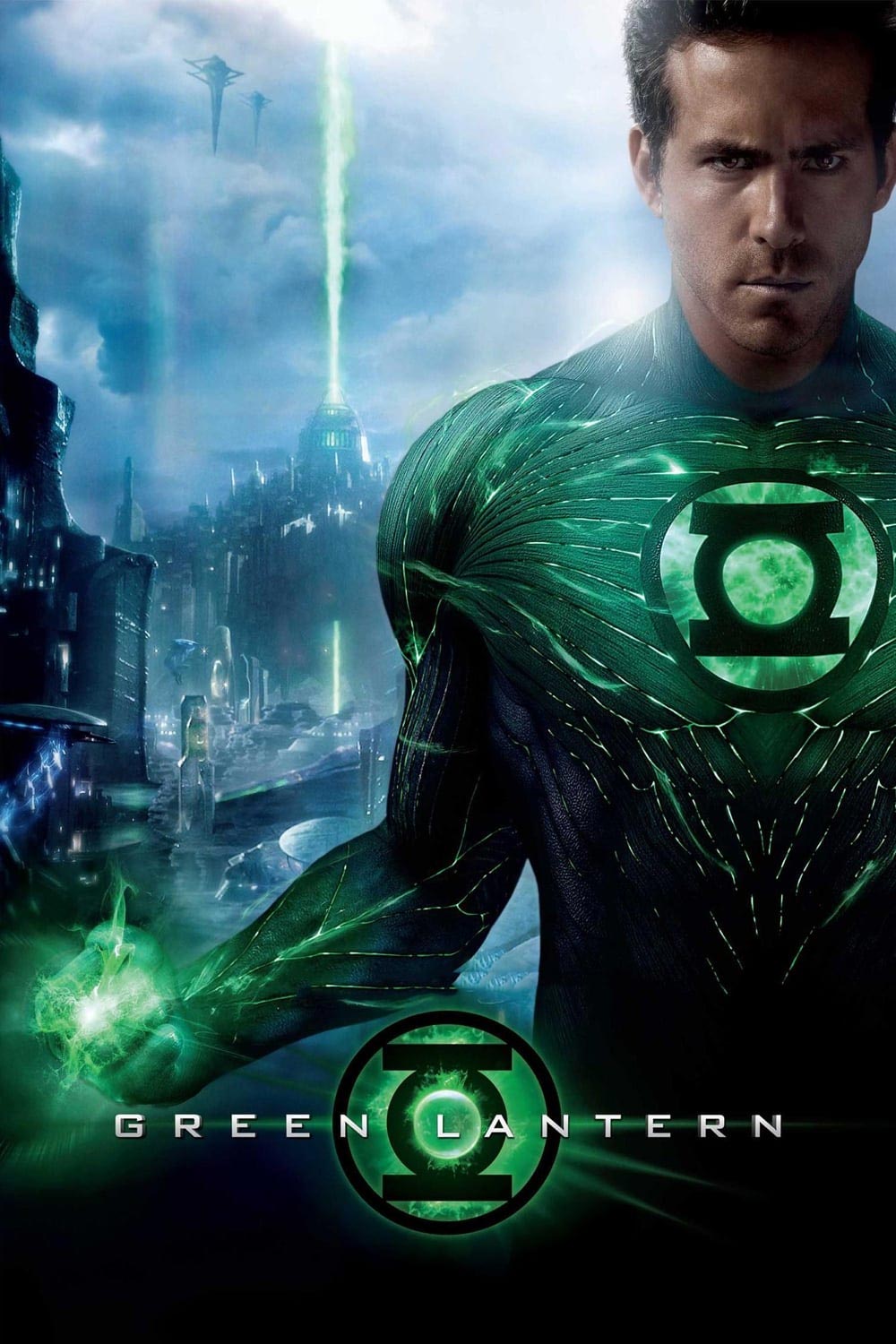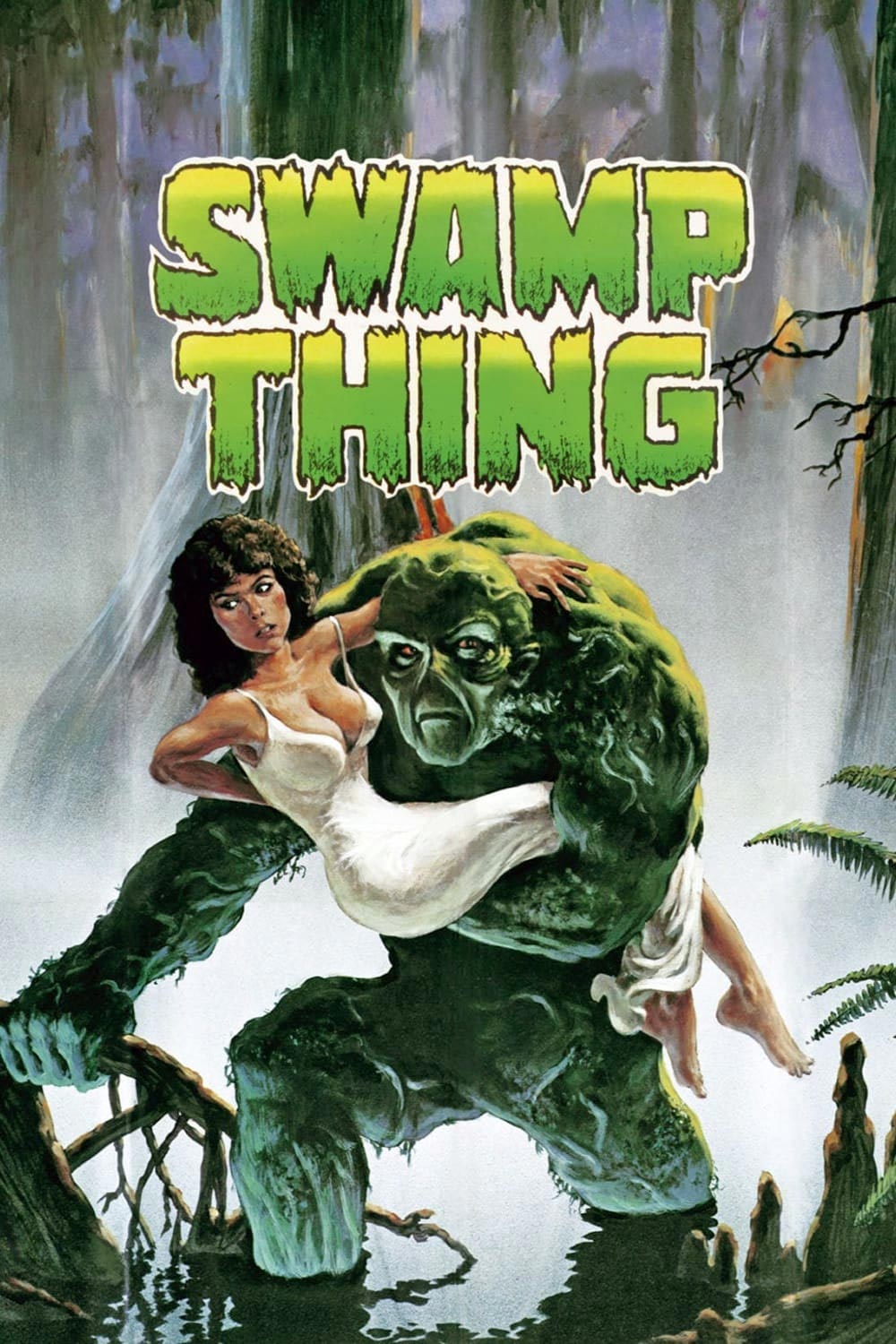Published on
You know you’re in for a good time when a movie kicks off with the names Bryan Singer and Kevin Spacey. It makes you wonder just how much ball fondling went on behind the scenes. The MeToo movement has a way of turning certain films into curdled relics overnight. But like so many now-soured productions, there’s nothing on screen that hints at the off-camera sleaze. “Superman Returns” remains a welcome reunion with the Man of Steel and his bumbling alter ego, Clark Kent.
After mysteriously disappearing for five years in search of remnants of Krypton, Superman returns to Earth to find a world that has moved on without him — Lois Lane has a new fiancé and a young son, and Metropolis has learned to live without its hero. Meanwhile, Lex Luthor, newly freed from prison, puts a sinister plan into motion to create a new continent using stolen Kryptonian technology, which would destroy much of the United States in the process. As Superman tries to reclaim his place as Earth’s protector and reconnect with Lois, he must stop Luthor’s catastrophic land grab, all while facing the limits of his powers and the weight of his human attachments.
“Superman Returns” is a bit of an odd duck. It’s supposedly set five years after the events of “Superman I” and “II” — so much so that Marlon Brando even makes a ghostly return via archive footage as Jor-El, Superman’s father. The film leans into nostalgia with an opening credits sequence styled just like the original, complete with John Williams’ iconic theme blasting triumphantly. But at the same time, it’s set in the present day — well, 2006 — more than two decades after “Superman II” hit theaters. Aside from Brando’s recycled performance, everyone’s been recast, leaving the movie feeling torn between being a direct sequel and trying to stand on its own feet.
In the 20-plus years since the original, visual effects have been utterly transformed by CGI. Back in 1978, Superman’s flying looked good for its time, but the rear projection and green screen work were pretty obvious. By contrast, “Superman Returns” looks slick — especially during its standout moment: a mid-air plane disaster that’s easily the film’s biggest showstopper. The only shame is that this jaw-dropping set piece happens so early on, leaving the rest of the movie struggling to top itself.
In his performance as Clark Kent, Brandon Routh channels Christopher Reeve’s interpretation but never fully commits to the goofiness Reeve brought to the role. The result is a subdued imitation that feels more like an impression than a fresh take. “Superman Returns” is also tonally far more serious than any of Reeve’s films ever were. There is an upside to this: it brings the movie more in line with the superhero films of its era — more grounded, more character-driven, and with Superman’s powers reined in and better defined. Gone are the random deus ex machina powers like turning back time, wiping memories with a kiss, or rebuilding entire buildings with his eye lasers.
But the more grounded tone also opens up questions the film never bothers to answer. In the campy ‘80s movies, it made sense that Superman had a bumbling alter ego — it was all part of the fun. Here, you can’t help but wonder: what’s the point? Why does he even bother pretending to be Clark Kent when he could just be Superman 24/7? Why keep the day job, the glasses, and the endless excuses to slip away? The film’s attempt to be more serious drains some of the simple fun out of the character — leaving you with a mopey Superman and a secret identity that doesn’t really feel necessary anymore.
Kevin Spacey’s Lex Luthor is also a much more ruthless piece of work than Gene Hackman’s version ever was. He’s actually bald this time around, so at least there’s that bit of comic-book accuracy to appreciate. This Luthor feels like a dry run for Frank Underwood — the power-hungry, manipulative politician Spacey would later bring to life in “House of Cards”. Spacey knows how to ooze menace, and he leans into it here with relish. It’s just a shame that his master plan isn’t nearly as fresh as his performance. Instead of triggering an earthquake to sink the western seaboard like in the original film, this time he wants to wipe out the eastern half of the US by growing a giant alien island off the coast. It’s basically the same scheme turned inside out — which makes his grand villainous ambitions feel about as recycled as the footage of Marlon Brando.
But the one thing that really bugged me in this movie was the color grading — especially in the scenes at the Daily Planet. In close-ups, most of the characters look oddly pale, like they’re all secretly battling the flu. Then the movie cuts to a wide shot and suddenly everyone has a healthier glow again. It’s distracting as hell and clearly a deliberate choice made in post-production. The first two acts look fine for the most part, but there’s an obvious push toward a more muted color palette. Superman’s costume, famously made of bright primary colors, now looks duller than ever — his once-bright red cape has been downgraded to a somber maroon. Bryan Singer has never seemed fond of colorful superhero costumes; remember how he stuck the X-Men in head-to-toe black leather instead of their comic-accurate outfits? That same aversion shows up here too.
But my biggest gripe with the movie’s color and overall aesthetics comes in the final act. The island Luthor creates — the big stage for the climax — is just plain ugly. I’m not saying it should look like a tropical paradise, but what we get is basically a drab, brownish-black knockoff of Superman’s Fortress of Solitude. It’s harsh, jagged, and miserable to look at — a real eyesore, which is baffling considering the filmmakers had total freedom to design an alien landscape that could have been visually stunning. Instead, we’re stuck staring at a muddy rock pile for the entire climax, which perfectly sums up how drab “Superman Returns” often feels: there’s potential for spectacle and wonder, but it all ends up looking grim and washed-out.
“Superman Returns” is a decent Superman movie, but it never quite lives up to its promise. It borrows too much from the darker, more grounded vibe of films like “Batman Begins” — which had come out just a year earlier — when what it really needed was the confidence to be its own unapologetically bright, larger-than-life adventure. Superman’s world works best when it leans into hope, color, and a sense of wonder. Instead, “Superman Returns” feels stuck between paying tribute to the past and trying to fit into a grittier superhero landscape, leaving it oddly muted and half-committed in the end.
